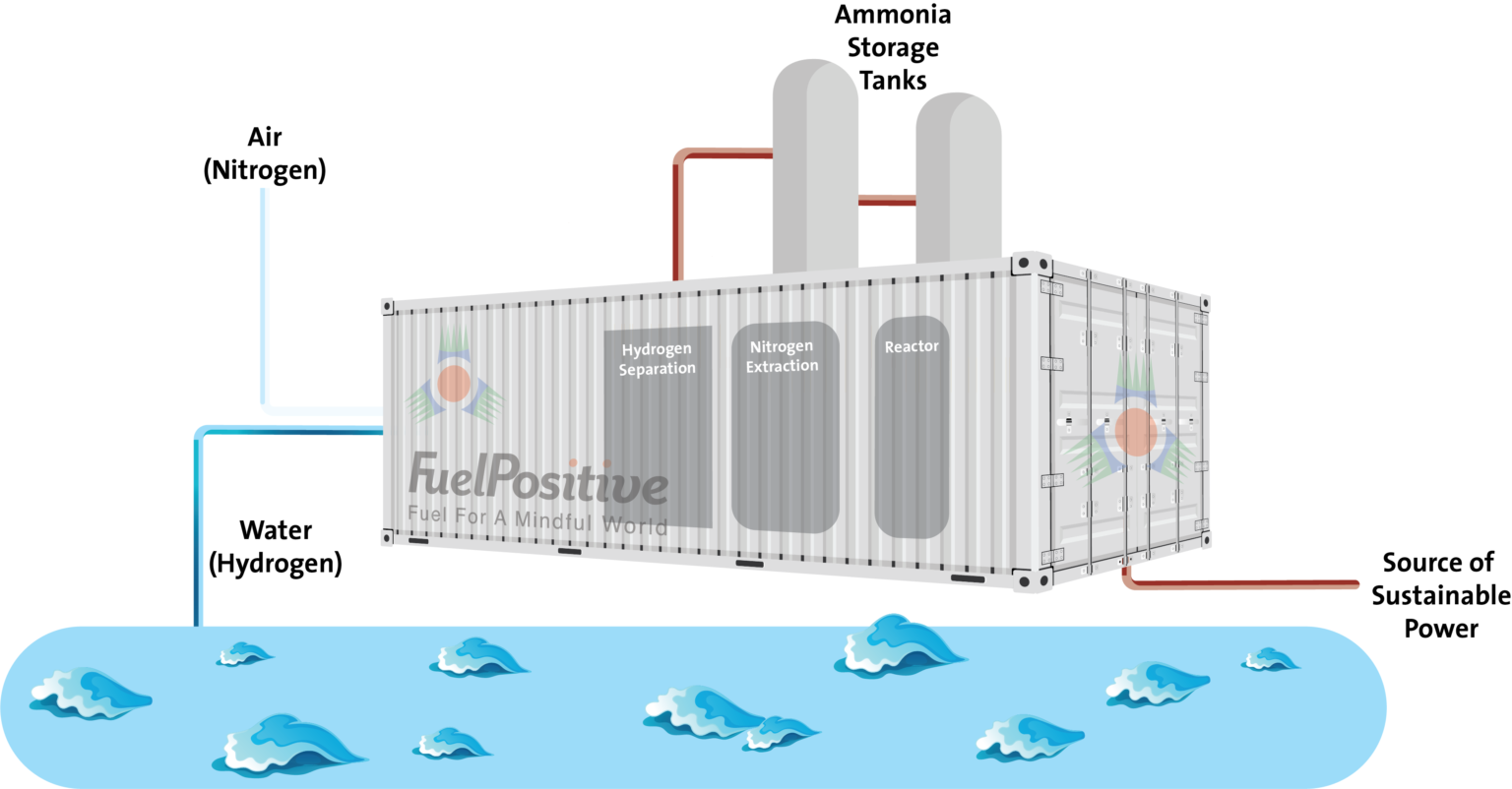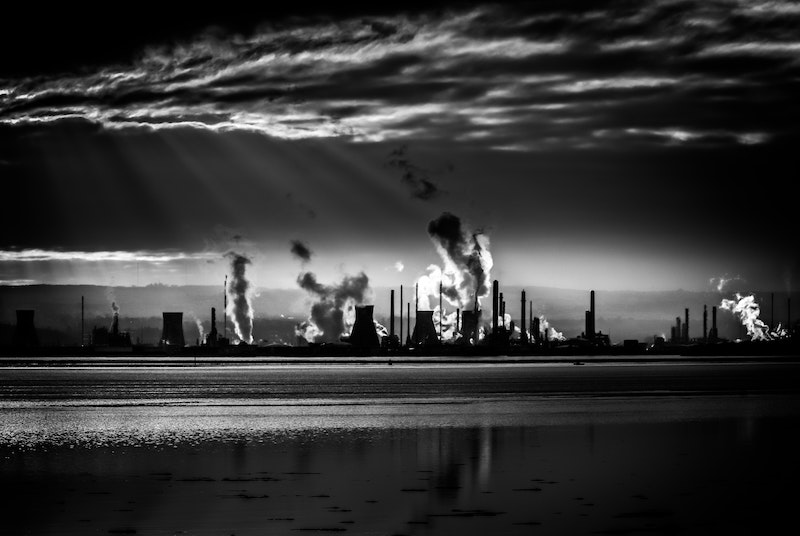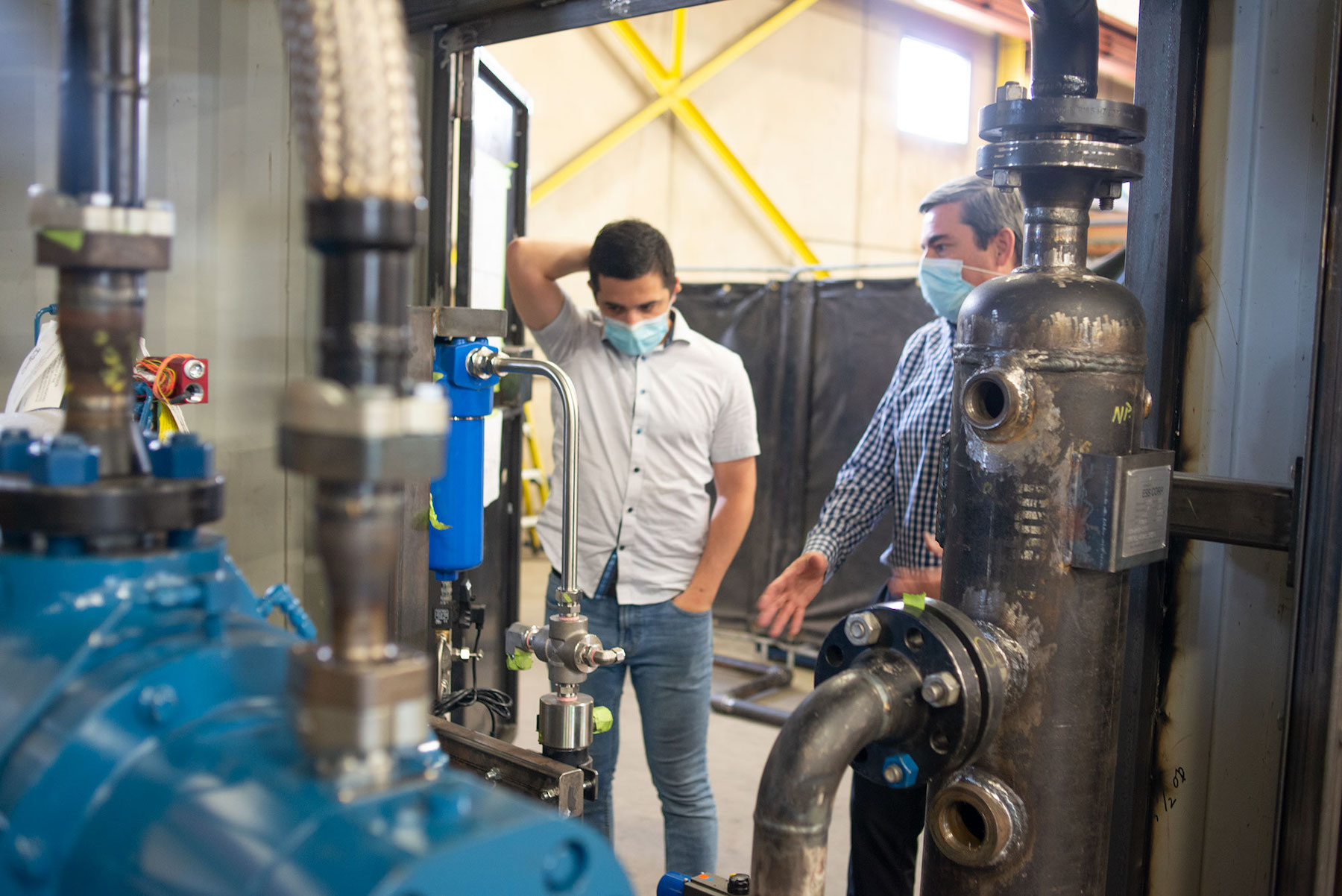- Sustainable Planet -
- 5mins -
- 362 views
Canadian company promises cheap green ammonia without CO2 emissions
FuelPositive claims each of its modular container-sized ammonia production units can supply 100 tons of green ammonia per year at a fraction of the cost of grey ammonia, the world’s 3rd-worst co2 polluter used in the production of fertilisers.
Green ammonia is cheaper to produce and better for the environment
If you follow the clean energy scene, you know that we need alternatives to fossil fuels and that green ammonia is being considered by many as the hope of the future and more practical and achievable than green hydrogen. However, the problem is that no one has figured out how to get it produced economically and quickly… until now.

FuelPositive say their technology is ready to deploy right away
As the world is discovering the potential of green ammonia to significantly reduce carbon emissions and surpass our international greenhouse gas reduction commitments, Canadian company FuelPositive believe they have the technology to make it happen economically and efficiently, and in the short term.
They say their lead product, a novel green ammonia production system, will revolutionise clean energy through a patent-pending, first-of-its-kind technology invented in Canada. Adoption will dramatically support global targets to reduce CO2 emissions. And the traditional ammonia industry will die out because it will be too expensive and too damaging to the environment.
FuelPositive say their green ammonia will not contribute to pollution. When used properly, in agriculture or as a fossil fuel replacement, the only discernible emissions will be water vapor, or in the case of agriculture, some hydrogen emissions which are completely inert. Nitrous Oxide (NOx) emissions, associated with traditional ammonia, will be avoided by using a catalytic converter in engines and by injecting the liquid fertiliser deep into the ground and utilising inhibitors (already standard practice) in farming.
Source: FuelPositive

What Do They Mean By “Sustainable” and will there be enough clean electricity?
What Do They Mean By Sustainable?
FuelPositive’s green ammonia is produced by taking air, water and sustainable electricity and converting that into a non-polluting chemical, fertiliser and fuel. Electricity is sustainable when it can be maintained over a period of time while not depleting resources or damaging the environment through carbon emissions. Sustainable electricity includes hydroelectric, wind, solar, biomass and geothermal power.
Will There Be Enough Clean Electricity For Ammonia Production?
Forecasts for the clean electricity market are strong as countries around the world are increasingly aggressive about meeting their international greenhouse gas reduction commitments. In Canada (which is by no means a global leader), over 85% of electricity in B.C., Manitoba, Quebec, Newfoundland & Labrador and the Yukon is hydroelectric. Renewables are already a way of life and the price is continually dropping.
According to a recent report from the International Renewable Energy Agency (IRENA): “The trend is not only one of renewables competing with fossil fuels, but significantly undercutting them, when new electricity generation capacity is required.”
In fact, Canada today has enough off-peak green electricity to provide non-polluting, green ammonia to fuel 63% of all the passenger cars, light trucks, passenger aviation, buses, light rail, motorcycles, freight trucking, freight aviation, rail, marine and other sector vehicles in the country (based on 2019 data).
But even more exciting, Canada has enough off-peak green electricity to provide green ammonia to fuel 100% of the needs of passenger and freight aviation and rail, passenger bus, freight trucking, freight rail and freight marine shipping in Canada – all regulated industries that are notoriously high greenhouse gas emitters with significant government mandates to decarbonise. The result would be a 15.3% reduction in Canada’s total greenhouse gas emissions.
Source: FuelPositive

FuelPositive claim their green ammonia will:
- Eliminate fertiliser-related carbon emissions in the agriculture sector
- Replace fossil fuels used for transportation
- Provide an affordable, convenient, sustainable supply of hydrogen for fuel cells
- Offer storage of excess electricity for energy grids
- Enable the shift to a hydrogen economy
- Produce significant carbon credits as a result of emission reductions
- Reduce the need for the current massive, highly polluting ammonia production facilities and the accompanying unreliable supply chains because:
- No need for massive refineries, supertankers, pipelines leaking toxic fossil fuels
- No CO2 emissions
- No price fluctuations
- No Shortages
The world needs sustainable, clean energy to reduce carbon emissions right now, and FuelPositive say they’re ready to deploy their technology in the short term, bringing measurable results quickly.



